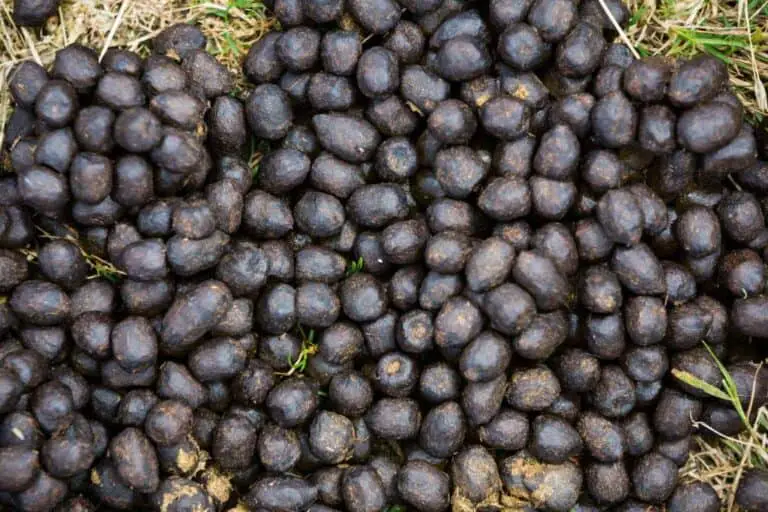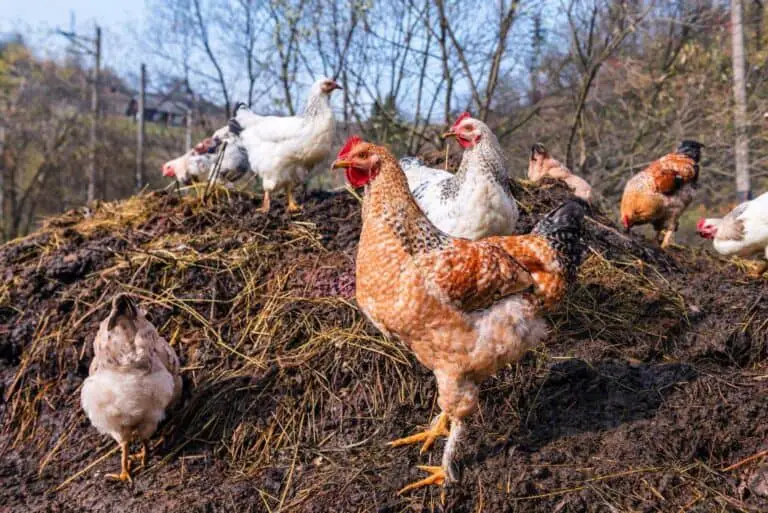How to Spread and Apply Manure on Your Lawn (Top Dressing for Best Result)

Imagine entering your backyard and finding a carpet of lush, velvety grass to greet you—a sight that not only soothes your eyes but also fills you with pride. Achieving this dreamy lawn isn’t reserved for the experts; it’s within your reach, thanks to a time-tested and natural method—manure application.
In this guide, we’ll unveil the secrets of spreading and applying manure to your lawn to transform it into a green haven. Manure is more than just cow dung; it’s a powerhouse of nutrients that can breathe life into your soil and grass. Whether you’re a beginner or a seasoned gardener, our step-by-step instructions and insightful tips will take you from patchy to perfect.
Discover how to select the right type of manure, the best practices for spreading it, and the essential maintenance tips after topdressing your lawn with manure. Get ready to embark on a journey of lawn transformation, where you’ll wield the magic of manure to revive your outdoor space and create a haven of natural beauty.
The Benefits of Manure for Your Lawn
Before we dive into the “how,” let’s talk about the “why.” Manure, whether from cows, horses, or poultry manure, is a nutrient-rich natural fertilizer that can work wonders for your lawn. Here’s why you should consider using it:
- Rich in Nutrients: Manure is a treasure trove of essential nutrients like nitrogen, phosphorus, and potassium (NPK), which are vital for healthy plant growth.
- Organic Matter: Manure adds organic matter to your soil, improving its structure and water-holding capacity.
- Microbial Activity: It fosters microbial activity in the soil, enhancing nutrient availability foro your lawn.
- Sustainable Choice: Using manure is an eco-friendly choice, recycling organic waste and reducing the need for chemical fertilizers.
- Cost-Effective: Manure is often more affordable than commercial fertilizers, making it a budget-friendly option.
Choosing the Right Type of Manure

Not all manure is created equal. The type of manure you choose can impact your lawn’s health. Here are some common types:
| Manure Type | NPK Ratio | Best Suited For |
| Cow | 0.6-0.2-0.5 | General lawn care |
| Horse | 0.7-0.3-0.6 | Promoting grass growth |
| Chicken | 1.1-0.8-0.5 | Vegetable gardens, high-nutrient |
| Sheep | 0.9-0.5-0.7 | Ornamental lawns, shrubs, trees |
Select the type that aligns with your lawn’s needs and availability. Cow and horse manure are excellent all-rounders, while chicken and sheep manure are more specialized.
How to Spread and Apply Manure on Your Lawn (Step-by-Step Guide)
Now that you’ve chosen the right manure for your lawn, let’s get into the nitty-gritty of how to apply it for the best results.
Step 1: Gather Your Materials
Before you start, gather the following materials:
- Manure: Ensure you have enough manure to cover your lawn evenly.
- Gloves: Protect your hands from bacteria present in manure.
- Wheelbarrow: Useful for transporting manure.
- Shovel or Pitchfork: To scoop and spread the manure.
- Garden Rake: For even distribution.
- Sprinkler or Hose: To water the manure in.
- Weather-Appropriate Clothing: Dress comfortably for the task at hand.
Step 2: Prepare Your Lawn
- Mow your lawn to a short height before applying manure.
- Remove any debris or weeds from the lawn surface.
- Check the weather forecast; choose a day when rain isn’t expected within 24 hours.
Step 3: Spread the Manure
- Start at one corner of your lawn and work your way back and forth in parallel rows.
- Use your shovel or pitchfork to scoop small piles of manure onto the lawn.
- Spread the manure evenly using a garden rake. Aim for a thickness of about 1/4 to 1/2 inch.
Step 4: Water Thoroughly
After spreading the manure, water your lawn thoroughly. This helps nutrients seep into the soil and prevents any odor issues.
Step 5: Let Nature Work
Allow your lawn to rest for a few days after application. Keep foot traffic to a minimum to let the manure work its magic.
Step 6: Repeat as Needed
You can repeat this process 1-2 times a year, typically in early spring and late summer, for a healthy and vibrant lawn.
Expert Tips for Manure Application
- Avoid Fresh Manure: Fresh manure can burn your lawn due to its high ammonia content. Compost or age it for a few months before use.
- Calibrate Your Spread: Use a spreader to ensure even distribution of manure.
- Consider a Soil Test: A soil test can help you determine the exact nutrient needs of your lawn.
- Stay Mindful of Odor: Manure can produce odors, so be considerate of your neighbors when applying it.
- Wash Tools and Hands: After handling manure, clean your tools and wash your hands thoroughly to prevent contamination.
Caring for Your Lawn After Manure Application
Once you’ve successfully applied manure to your lawn, the journey towards a greener, healthier yard is far from over. To ensure your grass thrives, it’s essential to pay close attention to watering and irrigation practices.
Adequate moisture is key to helping those nutrient-rich elements in the manure penetrate the soil and reach the roots. Aim for deep, infrequent watering rather than shallow daily watering, as this encourages deep root growth and better drought resistance. Consider investing in a sprinkler system or soaker hoses to make the process more efficient.
Monitoring the growth and health of your lawn is another crucial step. Keep an eye out for any signs of stress, such as yellowing or browning patches, as these could indicate issues like nutrient imbalances or inadequate moisture. Regular mowing at the correct height and ensuring the lawn isn’t overgrown can also contribute to its overall health.
Speaking of nutrient imbalances, addressing them promptly is vital. Conduct a soil test to determine any deficiencies or excesses in your lawn’s nutrient levels. Based on the results, adjust your fertilizer or manure application accordingly. This proactive approach ensures your lawn gets precisely what it needs for optimal growth.
Lastly, don’t forget to adjust your future application schedules. Depending on your lawn’s response to the previous manure application, you may need to tweak the timing and amount. Every lawn is unique, so be prepared to adapt your care routine as it evolves. With consistent attention and a tailored approach, you’ll soon enjoy a lawn that’s the pride of your neighborhood.
Alternative Organic Lawn Fertilization Methods
When it comes to maintaining a lush, green lawn, organic fertilization methods offer sustainable alternatives to chemical products. Let’s explore some eco-friendly options that can rejuvenate your grass and promote a healthier environment.
1. Cover Crops and Green Manures:
Cover crops and green manures involve planting specific plants to improve soil health and provide nutrients naturally. They act as protective blankets for your lawn, preventing soil erosion and weed growth while enriching the soil. Popular choices include clover, alfalfa, and ryegrass. These plants work symbiotically with your grass, increasing nitrogen levels and enhancing overall soil structure. Here are the pros and cons:
| Method | Pros | Cons |
| Cover Crops | – Soil enrichment | – May require additional care |
| – Weed suppression | – Can be slow to establish | |
| – Reduced erosion | ||
| – Enhanced soil structure |
2. Liquid Organic Fertilizers:
Liquid organic fertilizers are concentrated nutrient solutions that can be easily applied to your lawn. They provide a quick nutrient boost and are simple for grass roots to absorb. These products are typically derived from natural sources like fish, kelp, or compost. Here are the pros and cons:
| Method | Pros | Cons |
| Liquid Organic | – Quick nutrient absorption | – May require frequent application |
| Fertilizers | – Promotes rapid growth | – May be more expensive |
| – Contains beneficial microorganisms | ||
| – Reduces nutrient leaching |
3. Worm Castings and Compost Teas:
Worm castings and compost teas are rich in organic matter and microorganisms, making them excellent choices for soil health. Worm castings are the waste products of earthworms, while compost teas are created by steeping compost in water. Both can be applied directly to your lawn for gradual nutrient release. Here are the pros and cons:
| Method | Pros | Cons |
| Worm Castings | – Enhances soil structure | – May take time to show results |
| and Compost Teas | – Increases microbial activity | – Requires proper preparation |
| – Improves nutrient retention | – May not be readily available | |
| – Environmentally friendly |
Comparing Pros and Cons:
Each of these alternative organic lawn fertilization methods has its advantages and limitations. Your choice may depend on factors such as your lawn’s specific needs, the time you’re willing to invest, and your commitment to organic lawn care.
Combining these methods can also provide a balanced approach to achieving a healthier and more vibrant lawn while reducing your environmental footprint. Ultimately, the path you choose will lead to a greener, more sustainable lawn that you can enjoy for years to come.
Conclusion
Spreading and applying manure to your lawn is a rewarding endeavor that can lead to a lush, green paradise right outside your door. By choosing the right type of manure, following the steps outlined in this guide, and heeding expert tips, you can achieve the best results for your lawn. Give your grass the nutrients it craves and watch it flourish, all while embracing a sustainable and eco-friendly approach to lawn care.
So, go ahead and take the first step toward a healthier, more vibrant lawn—your neighbors will be green with envy!
FAQs on Organic Lawn Care Practices
What is the best time of year to apply manure to my lawn?
The best time to apply manure to your lawn is typically in the fall or early spring. This allows the nutrients to be gradually released into the soil before the growing season.
Can I use horse manure on my lawn, or are there better options?
Yes, horse manure can be used on your lawn, but it should be composted first to reduce weed seeds and pathogens. Other manure options, like cow or poultry manure, can also work well for lawn applications.
Are there any safety precautions I should take when handling manure?
When handling manure, wear gloves and wash your hands thoroughly afterward. Avoid direct contact with your face, and store manure in a well-ventilated area to minimize odor and potential health risks.
How long does it take for manure to show results on my lawn?
How long does it take for manure to show results on my lawn?
What are the signs that I’ve applied too much manure to my lawn?
Signs of over-application include excessive plant growth, nutrient imbalances, and foul odors. It’s essential to follow the recommended application rates to avoid these issues.
Can I mix different types of manure for lawn application?
You can mix different types of manure for lawn application, but it’s important to maintain the correct nutrient balance and follow recommended application rates.
Are there any organic certifications for manure products?
Some organic manure products may carry certifications like “USDA Organic” or “OMRI Listed,” indicating they meet organic standards. Check product labels for these certifications.






